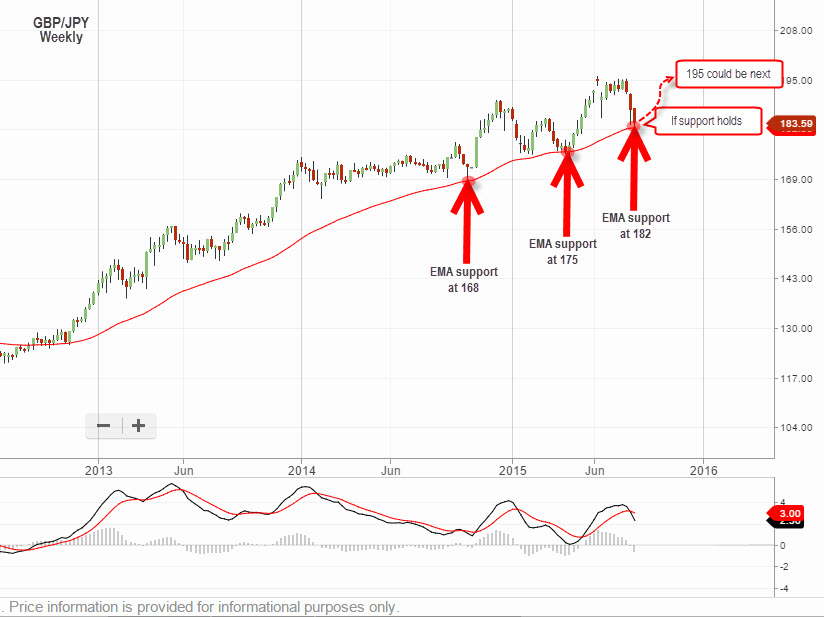CAD, NZD and AUD Feel Pressure from Chinese Dip
With the ECB policy decision and US NFP figures now out of the way, markets can resume their focus on the growing economic crisis in China. Recently, new data releases continue to point to a slowing Chinese economy which is already having far reaching repercussions. While it is relatively common for emergent economies to rely on resources for growth, it is less common in developed economies.
But of course, there are exceptions. And nowhere are China’s woes more acutely felt than in economies dependent upon Chinese growth. Specifically, we’re referring to the commodity or resource-linked economies, i.e. Canada, Australia and New Zealand. In the week ahead, we will have three key, potentially market moving events that could impact those currencies. Today, we take a closer look at the Canadian, Australian and New Zealand Dollars, more familiarly known to FX traders as the Loonie, Aussie and Kiwi.
Canada’s Loonie Feeling the Pressure
On Wednesday, the Bank of Canada (BOC) is set to release its monetary policy decision. Besides the situation in China, closer to home the BOC must take into consideration the unwelcome realization that Canada is officially mired in a recession. Though the actual figures slightly beat analysts’ expectations, they were dismal nonetheless. The latest numbers show that Canada’s economy suffered its second consecutive contraction in Q2 with GDP falling 0.5% (Year-over-Year). Worse, Q1 figures were downwardly revised to -0.8%. While the Bank of Canada does expect some improvement in the last two quarters of the year, its overall growth forecast has been lowered from 1.9% to 1.1%, a significant reduction by any standard. The collapse in the price of Oil has played a key role in the slide in Canada’s economy as Oil accounts for nearly 17% of its economic growth. Canada is heavily reliant on Chinese imports of Oil, and with demand from China waning, the outlook for Canada also dims. The Canadian Dollar recently traded at a fresh 11-year low versus the US Dollar, and the divergence of monetary policies in the short term could enlarge the rift. While the BOC may be considering lowering interest rates it comes at the same time that the Federal Reserve is considering a rate hike. While analysts haven’t reached a consensus expectations are growing that the BOC could, yet again, lower its benchmark rate.
Is New Zealand’s Kiwi Overripe?
The Reserve Bank of New Zealand (RBNZ) will be making its interest rate and policy decision on Wednesday. Like Australia and Canada, the Kiwi economy relies heavily on commodities for growth, in this case, dairy products. The continual decline of dairy product prices has resulted in the lowering of growth estimates for the country. Indeed, the latest economic news is largely disappointing; business confidence hit a fresh 6-year low while retail sales fell to a 3-year low in Q2. On the plus side, economists believe that private consumption and construction activity could drive New Zealand’s growth. However, growth is likely to be tempered by a too high (“overripe”) Kiwi Dollar which is weighing on export prices. The RBNZ in July cut its benchmark cash rate to 3.0%. And though that rate is significantly higher than its major peers, expectations are growing that another rate cut could be in store.
Anguish over Australia’s Aussie
In Australia, the drop in commodity prices, especially iron-ore which fell some 40% this past year, has likewise weighed on economic growth. Iron-ore mining, for example, accounts for nearly 10% of Australia’s GDP and more than half of all the iron ore in the world comes from Australia’s western region. But analysts point out that those economies that tend to be over reliant on natural resources like Oil and iron-ore are at risk if they don’t hedge against that overreliance by finding alternative growth means. Now, though Q1 GDP beat analysts’ expectations, the recently released Q2 figures were a big disappointment. Expectations had been for growth of 0.05% in Q2, but actual numbers showed the Australian economy grew only 0.2% (Quarter-over-Quarter). Annually, GDP was 2.0%, well below the 15-year average of 3.6%. The International Monetary Fund believes that Australia may be facing some challenges ahead in terms of growth and living standards. Ahead, markets will focus on the release of labor data on Thursday to assess the impact of declining growth.
Down to Business
As the Chinese economy continues to melt down, markets will focus on the impact on commodity-linked currencies like the Loonie, Kiwi and Aussie Dollars. If the BOC or RBNZ stands pat, then the respective currencies will move only in tandem to news from China, good or bad. However, if either the BOC or RNBZ is exceptionally dovish, the relative commodity currency might be on the receiving end of a knockout punch. And pushed to its respective corner, the Loonie and/or the Kiwi could take some time to regain its footing. For the Aussie, in the absence of China news, strong labor figures might provide the Aussie Dollar with a boost, while a disappointment would weigh.
On the plate
Eurozone Q2 GDP(Tuesday) – This will be the second release of the Eurozone Q2 GDP growth. If the second release will revise down the preliminary growth figures , the Euro could face further selling pressure.
BoC Rate Decision(Wednesday) – If the BoC turns dovish and moves towards more easing the Canadian Loonie(CAD) could face heavy selling
RBNZ Rate Decision(Wednesday)- If the RBNZ reacts to the turmoil in china with easing measures of its own , the Kiwi could be hit especially vs the Yen , the Dollar and even the Sterling.
Australian Unemployment(Thursday) – If Australian unemployment surges the likelihood the RBA will turn more dovish will rise and consequently the Aussie could face selling against its stoger peers the Dollar , the Sterling and the Yen.
Chart of the week – GBP/JPY
Economic Calendar:
Real Time Economic Calendar provided by Investing.com.


